22 Different Types Of Fish With Images

One of the earliest vertebrate animals to evolve on this planet are fish. They possess the fundamental blueprint for every form of bodily structure that exists on Earth and have developed into a wide variety of peculiar species.
The majority of bodies of water are rich in fish. With 34,300 described species, fish have the highest species diversity of any group of vertebrates. They can be found in nearly all aquatic environments, from the abyssal and even hadal depths of the deepest oceans (where they can be found as cusk-eels and snailfish) to the high mountain streams (where they can be found as char and gudgeon).
Fish are a valuable resource for people all throughout the world, particularly as food. Fish farmers raise fish in ponds or cages in the ocean (aquaculture) or hunt them in wild fisheries by both commercial and subsistence fishermen. Additionally, they are taken by fishermen who fish for fun, maintained as pets, grown by fishkeepers, and shown in public aquariums. Fish have played a significant part in culture throughout history, acting as deities, religious symbols, and topics of literature, art, and film.
Hagfish, cartilaginous fish, bony fish, and lampreys make up the majority of fish species.
Approximately 84% of all fish species are considered to be bony fishes. Chimeras, sharks, and rays are among the 970 surviving species that we are aware of, while hagfish and lampreys make up 108 of the total.
Below is list of fish species that are rather prevalent in different parts of the world. If you are interested to learn more about fish species, scroll down and continue reading.
Types Of Fish
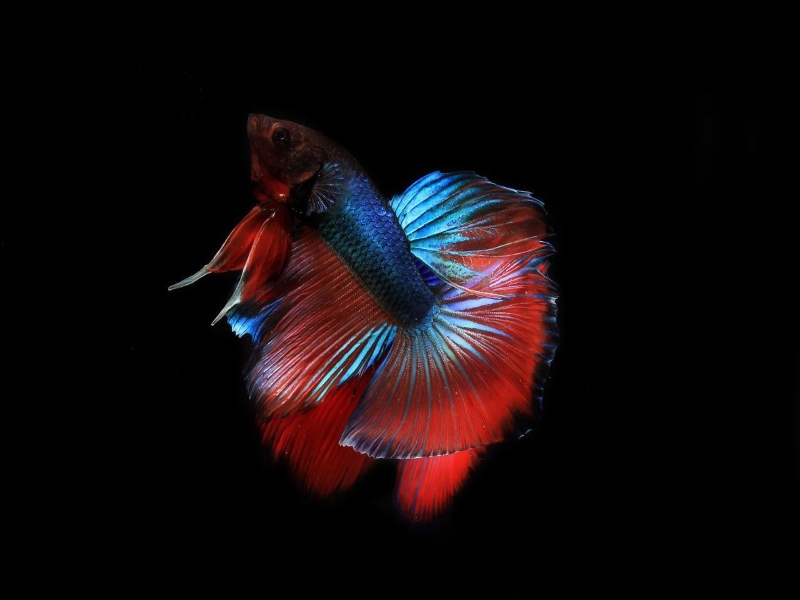
1. Siamese Fighting Fish
The Siamese fighting fish (Betta splendens), often known as the betta, is a freshwater fish that is indigenous to Southeast Asia. It may be found in rice fields, canals, and floodplains in Malaysia, Cambodia, Laos, Myanmar, Thailand, and Vietnam. They are classified as a vulnerable species by the IUCN as a result of the aquarium trade.
This type of fish is one of the most exquisite fish species in the entire world. Due to its distinctive and brilliant hues, it is well-liked in the aquarium industry. They are members of the gorami family of fish and are very possessive.
When another male Betta fish is released in the same tank, the aggressive males will engage in a battle to the death. The females will also turn antagonistic against other fish of the same species if the tank is too small.
This type of fish only has a two-year lifespan. The water should be between 23 and 27 degrees.

2. Rainbow Trout
Oncorhynchus mykiss is the scientific name for this species of fish, which is a rainbow trout. It is categorized as belonging to the Oncorhynchus species.
A member of the Salmonid family, the rainbow trout fish is found in the Pacific Ocean in North America and Asia. It likes the colder water better and typically returns to freshwater to reproduce.
They may be identified by the wide reddish stripe that runs from the gills to the tail on their lateral line. The steelhead, which are Rainbow Trout in freshwater, is the recognized state fish of Washington. Although various breeds can weigh up to 20 kg, they can only weigh up to 2.3 kg.
In 45 various countries around the world, Rainbow trout are hunted for recreation and for food, and imported populations may negatively impact the new environment. According to the Endangered Species Act, each of their breeds is classified as either vulnerable or endangered.
It is presented as both cuisine and sport for about 45 nations worldwide. They are among the healthiest foods you can eat and typically live for around 11 years.

3. Bluefish
The sole surviving member of the Pomatomidae family is the bluefish (Pomatomus saltatrix). With the exception of the northern Pacific Ocean, it is a marine pelagic fish that may be found all over the world in temperate and subtropical seas. In Australia, New Zealand, bluefish are referred to as elf and shad in South Africa, respectively. It is a well-liked culinary and game fish.
Their pectoral fins are folded back into the grove, and their first dorsal fin is spiny. Their belly and lower sides are white, while the area around their dorsum is a bluish blue-green tint. They typically weigh 9 kg but can weigh up to 18 kg.
As adults, they are extremely aggressive and powerful and do best in loose groupings. They are extremely quick swimmers that target forage fish in feeding frenzy. Menhaden, jacks, weakfish, grunts, anchovies, squid, and shrimp may all be detected by them. They even consume their own young since they are naturally cannibalistic.
This fish has a nine-year average lifetime.
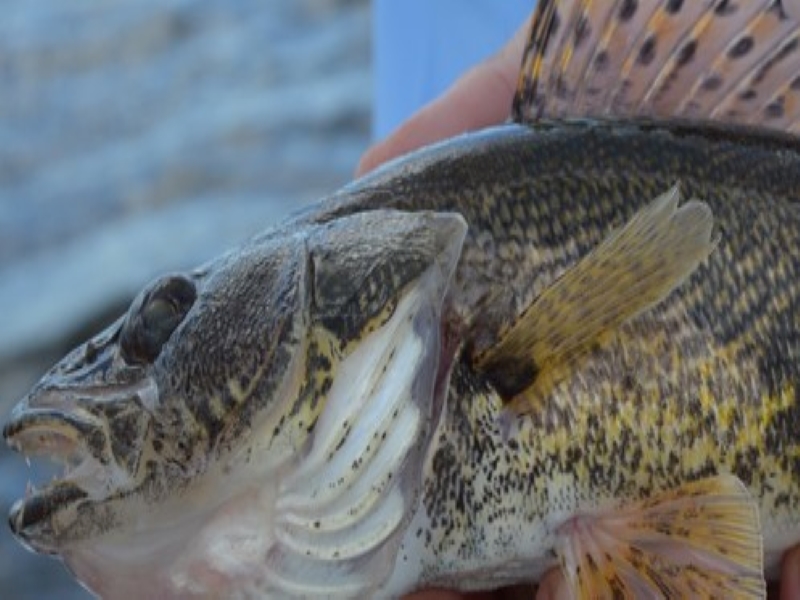
4. Sauger Fish
A type of freshwater fish from the Percidae family include the sauger fish. They are the most numerous migratory percid and are native to North America. They have two dorsal fins; one is soft-rayed and the other is spiny.
Because of their excellent adaptations, these predatory fish can swim through strong currents. They may weigh between 300 and 400 g and have a dark brassy hue.
The normal habitat of saugers is broad rivers with pools that are at least 0.6 meters deep. This freshwater fish must eat other fish in order to survive, although it also consumes small fish and invertebrates.
Due to habitat degradation, overexploitation, migratory obstacles, and entrainment in irrigation canals, the Saugers have seen a population decline.
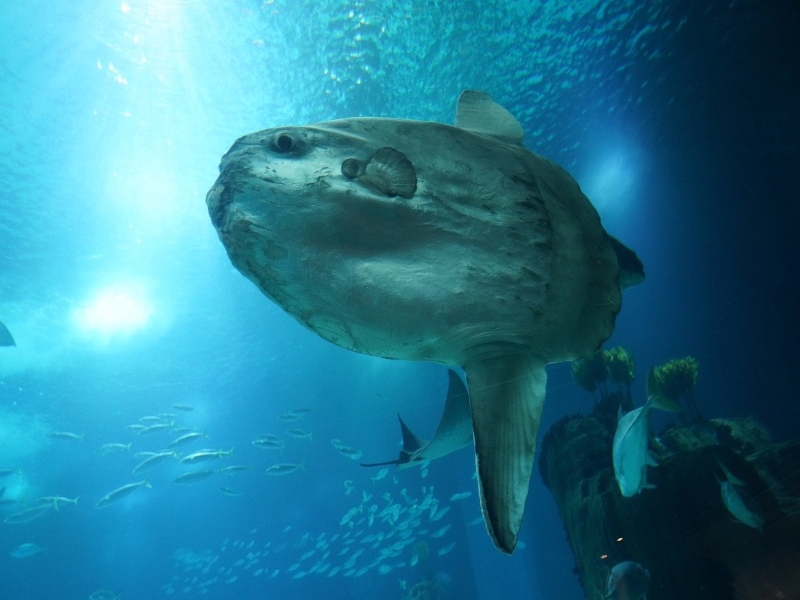
5. Ocean Sunfish
One of the two biggest bony fish known to exist is the ocean sunfish, also known as the common mola (Mola mola), while the other is the southern sunfish (Mola alexandrini), also from the same genus. Generally, adults weigh between 247 and 2,000 kg (545 and 4,409 lb). Tropical and temperate waters all across the world are home to the species. It has a fish-like head and tail, and its main body is laterally flattened. When their dorsal and ventral fins are extended, sunfish may be as tall as they are long.
They mostly consume nutritionally deficient sea jellies, thus they consume a lot of food to maintain their bulk. A spawn can contain 300,000,000 eggs, which is more than any other known vertebrate.
Although these large fish have few actual predators, sharks, killer whales, and sea lions may all consume them. In various regions of the world, including Taiwan, Korea, and Japan, people view them as delicacies.
The lifespan of of this fish has not yet been established in the wild, however it may reach ten years in captivity.
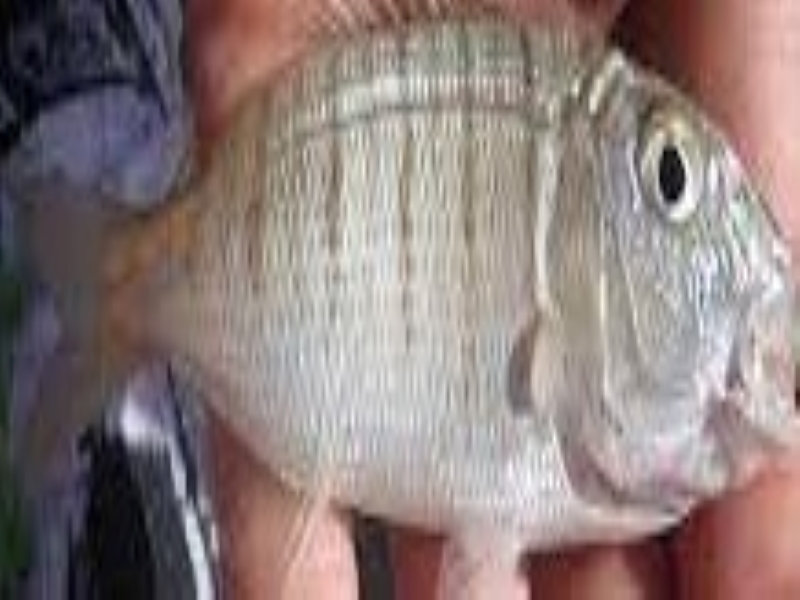
6. Sand Steenbras
Also known as striped seabream (Lithognathus mormyrus), it is a type of marine fish in the family Sparidae. It may be found in the eastern Atlantic Ocean, from France to South Africa, and shallow waters of the Mediterranean Sea. Furthermore, it may be found in the Indian Ocean, off the coast of Mozambique, and in the Red Sea.
The sand steenbras is a fish with a relatively deep body that may reach lengths of around 55 cm (22 in) and weights of approximately 1 kg (2.2 lbs), however 30 cm is the more typical size. Its top profile is somewhat convexed, and its head is roughly as long as it is tall. Eleven spines and twelve to thirteen soft rays make up the dorsal fin. The pectoral fin has fifteen to seventeen soft rays and is shorter than the head. The anal fin comprises ten to eleven soft rays and three spines. The body is marked with around fourteen vertical, dark bands, and both the head and body are silver.

7. Goldfish
A freshwater fish belonging to the family Cyprinidae of the order Cypriniformes include the goldfish (Carassius auratus). It is one of the most popular aquarium fish and is frequently kept as a pet in indoor tanks. In certain areas of North America, goldfish that were released into the wild have turned into an invasive nuisance.
East Asia is the natural home of this aquarium fish. In China, it was domesticated, and since then, other breeds have emerged. This fish is 19 inches long.
Goldfish have excellent social and learning abilities. Goldfish are social creatures. They eat plants and insects as food. Eggs laid by goldfish hatch in 48 to 72 hours.
Only with adequate water and the correct diet can goldfish reach sexual maturity. The majority of goldfish reproduce in captivity, especially in pond environments. Breeding often occurs after a substantial temperature shift, frequently in the spring. Male goldfish pursue gravid females (females bearing eggs) and bump and prod them until they release their eggs.
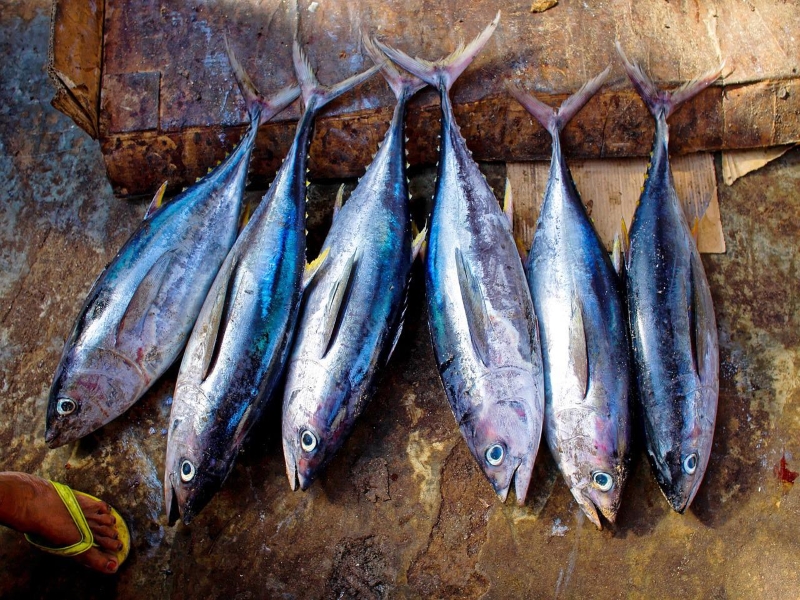
8. Tuna
A tuna is a saltwater fish that is a member of the Scombridae (mackerel family) subfamily’s tribe Thunnini.
They comprise 15 species, including the Atlantic bluefin tuna and the bullet tuna, whose sizes might differ. They have an average lifespan of up to 50 years and can keep their body temperature higher than the surrounding water.
Due to their streamlined and slender physique, they are a swift predator and can swim quickly. They are among the pelagic fish with the quickest swimming speeds, setting records of up to 75 km/h. It is a well-liked game fish, and several of its breeds are on the verge of extinction as a result of overfishing.
Tuna is rich in Omega-3. Pregnant mothers and the developing fetus benefit most from this edible fish. In terms of animal protein, it is really good. Two cans of tuna per week are healthy for the body since canned tuna has lower mercury levels than sushi and tuna steaks.
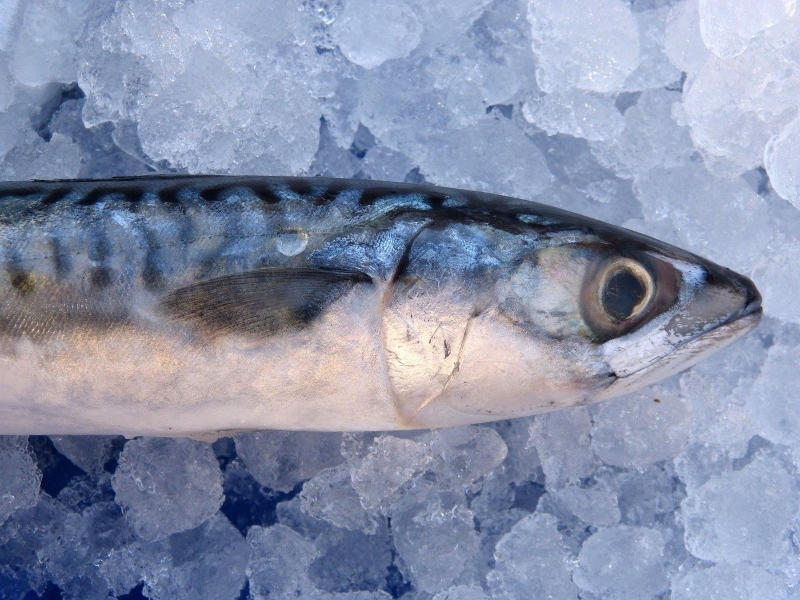
9. Atlantic Mackerel
Also known as the “Boston mackerel”, “Norwegian mackerel”, “Scottish mackerel”, or simply “mackerel,” is found in temperate waters of the North Atlantic Ocean, the Mediterranean Sea, and the Black Sea. Here, it is very prevalent and forms enormous shoals in the epipelagic zone down to about 200 meters (660 ft). It appears along the coast in the spring and leaves as the colder months approach, spending the hot months close to shore and on the ocean’s surface. In search of milder temperatures during the fall and winter, it migrates out into deeper, more southern waters.
Scomberscombrus is the scientific name for Atlantic mackerel. It falls within the classification of a scomber.
Mackerel have an average lifetime of 20 years. It will eventually be the finest meal for people.
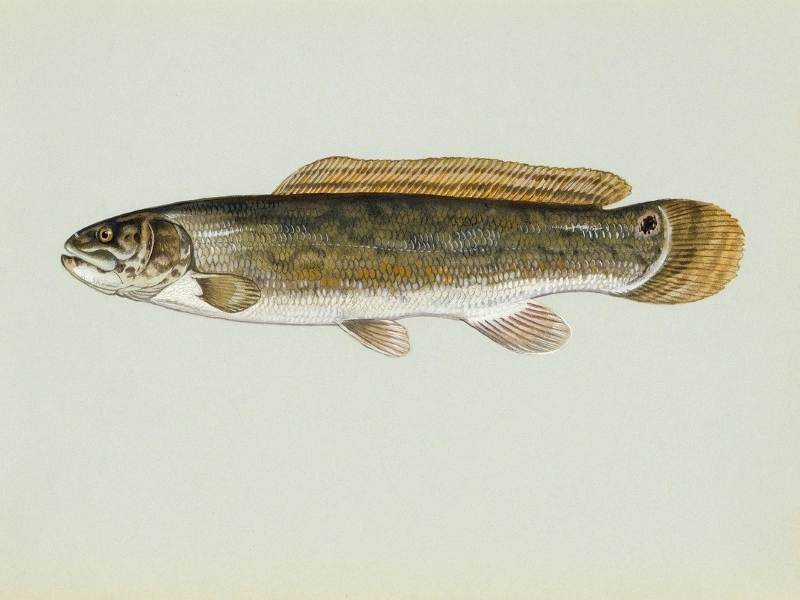
10. Bowfin
A bony fish that is indigenous to North America is the bowfin (Amia calva). Mudfish, mud pike, dogfish, grindle, grinnel, swamp trout, and choupique are some of their common names. It is considered a primitive fish.
The bowfin fish has a mottled appearance of green and brown that nearly looks yellow at the belly. It also has a black mark close to its tail that may be used to frighten off other animals. This fish gets its popular name from its dorsal fin, which has 46 to 50 gentle undulating rays and covers about half of the back. Additionally, it has a small anal fin close to the back, a pair of pectoral fins close to the head, a pair of pelvic fins about the middle of the lower body. Large teeth are found in the skull, which is made of two layers that are stacked one on top of the other for further protection.
The body of the bowfin is rather lengthy. It is 20 to 30 inches long from head to fin and weighs between 4 and 10 pounds. The biggest specimen ever discovered reached a height of 43 inches and weighed over 21 pounds. The male bowfin has an orange circle around its black tail spot and is often smaller than the female.
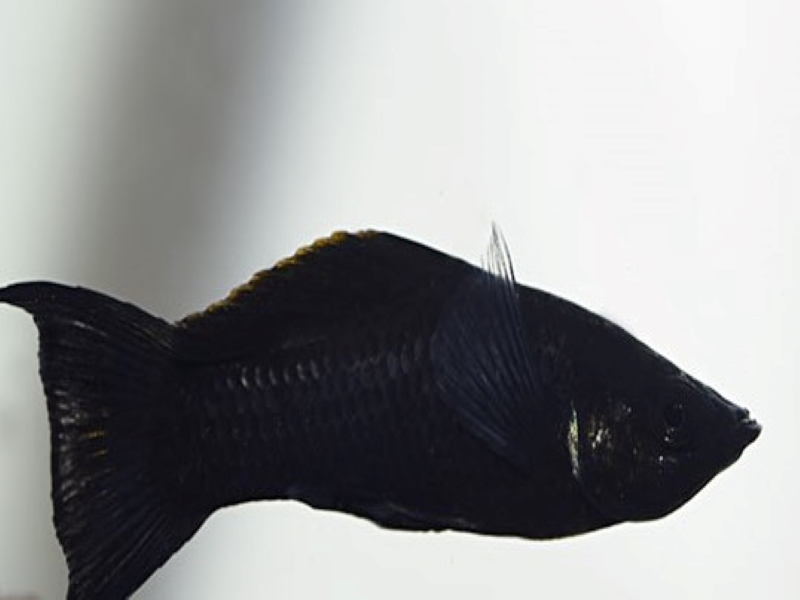
11. Black Molly
A peaceful fish, Black Molly, is a wonderful option ff you want a fish community tank with a variety of species. This fish’s ability to adapt to fresh, brackish, and salt water is a major benefit. As a result, you may unwind when setting up a tank. The ideal temperature for these fish is between 70 and 82 degrees Fahrenheit.

12. Golden Shiner
Eastern North America and Quebec are the natural home of the Golden Shiner, a cyprinid fish. It is the most widely utilized pond-cultured fish in the area and is mostly used as bait. The Golden Shiner typically reaches heights of between 7.5 and 12.5 cm. Its belly is a silvery white tint and it is an olive or dark green tone.
The freshwater fish often consumes zooplankton, plants, algae, and insects. They can detect their prey due to their keen vision. These small fishes are frequently utilized as bait since they have a lot of predators. They do well in still bodies of water like lakes, ponds, sloughs, and ditches. The Golden Shiner enjoys weedy environments and can tolerate turbidity and low oxygen levels.

13. Doctor Fish
Also known as nibble fish or red garra. It is a cyprinid species that is indigenous to many different freshwater environments in subtropical regions of Western Asia. The average length of this little fish is up to around 14 centimeters (5.5 inches), however individuals can grow up to 24 cm locally (9.5 in).
These species are utilized in a spa procedure to treat psoriasis in skin sufferers. They may be found in the northern regions of Syria, Turkey, Oman, Iran, and Iraq as well as in the river basins of the central Middle East. This kind of fish has a lifespan of around 6-7 years.

14. Atlantic Cod
This fish belongs to the Gadidae family, which is mostly hunted by humans for food. The ICUN has classified it as vulnerable because of excessive fishing for human consumption. It is sometimes referred to as cod or codling. Dry cod can be cooked as clipfish, cured salt cod, or unsalted stockfish.
Although they normally reach heights of 100 to 140 cm and weigh up to 50 kg, Atlantic cod have been known to survive for up to 25 years. They reach sexual maturity between the ages of two and eight, however this varies between populations and has changed through time.
It is easy to capture in a variety of seas since it may be found in habitats from the main continental shelf to the coast.

15. Wels Catfish
Also known as sheatfish or just wels. These are large catfish that are prevalent to a sizable portion of central, southern, and eastern Europe, specifically the basins of the Baltic, Black, and Caspian Seas. It was brought to Western Europe as a valued sport fish, and today it may be seen from the United Kingdom in the east all the way to Kazakhstan and China, and in the south all the way to Greece and Turkey. It is a freshwater fish that may be identified by its big mouth and broad, flat head. The lifespan of a wels catfish is at least fifty years.
People consume them as food. It is nutrient- and protein-rich.
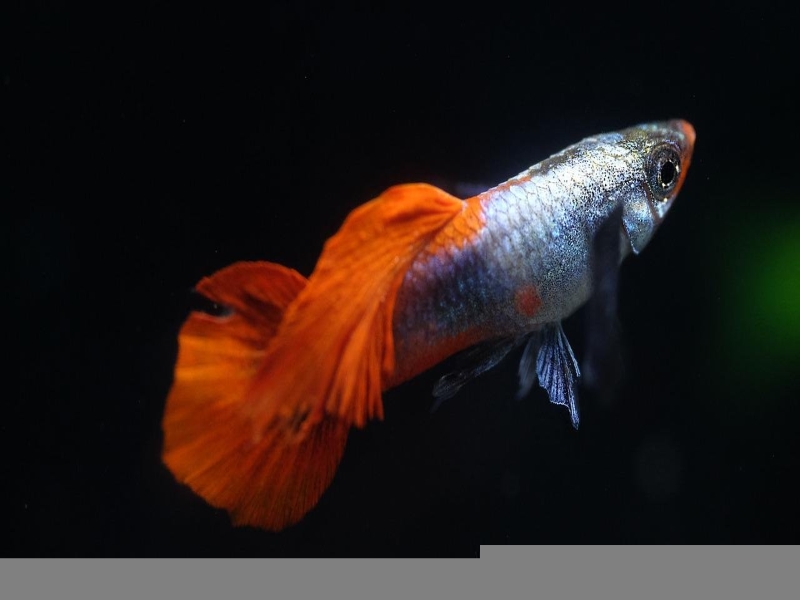
16. Guppy
The guppy (Poecilia reticulata), commonly known as millionfish and rainbow fish, is one of the most common freshwater aquarium fish species and one of the most extensively distributed tropical fish in the world. Guppies are native to northeastern South America, but after being introduced to many habitats, they are now widespread. They can survive in a wide range of ecological and climatic situations due to their remarkable adaptability. The caudal and dorsal fins of male guppies, which are smaller than those of females, are attractive. Wild guppies often consume a range of foods, such as aquatic bug larvae and benthic algae.
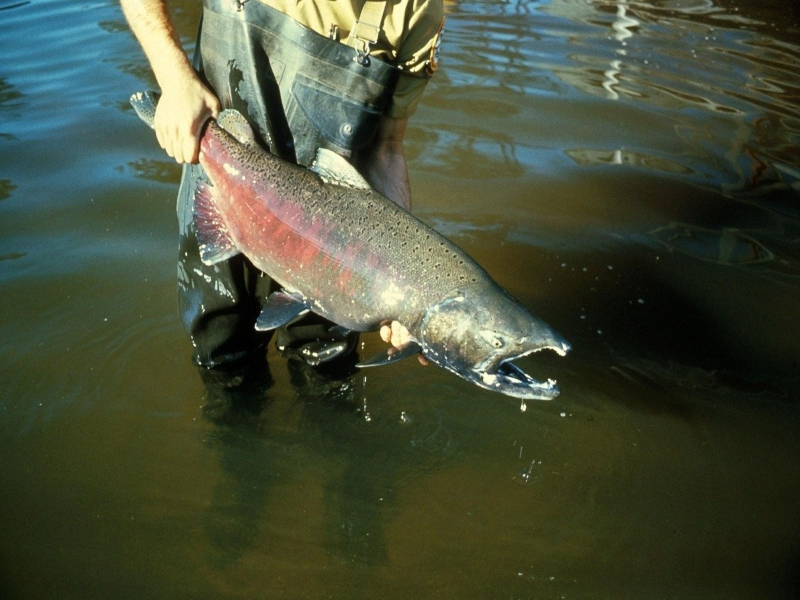
17. Chinook Salmon
Chinook salmon have a long, tapered body, a back that is blue-green, sides that have a silver sheen, and a belly that is white. Along with this, there are black dots on the tail fin’s lobes and the top part of the body. The term “blackmouth” is also used to describe them because of a second black stripe along the gum line. The Chinook abruptly transforms into an olive-brown, crimson, or purple tint in anticipation of spawning season, and the males grow the hook on their upper jaw. In contrast, the blunt snout and bigger midsection of the females make them easily identifiable. Among all salmon, the Chinook is one of the biggest.
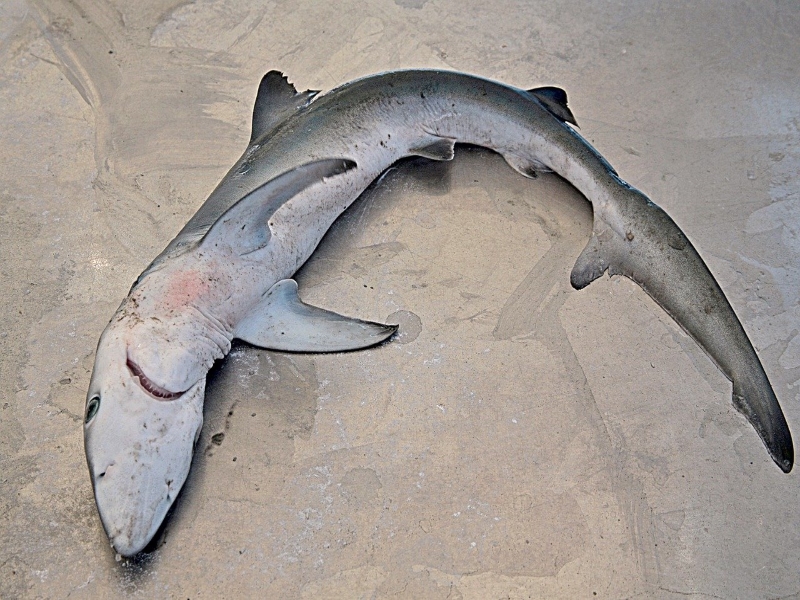
18. Thresher Sharks
All temperate and tropical waters across the world are home to thresher sharks, which are enormous lamniform sharks belonging to the family Alopiidae. There are three living species in this genus.
Some well-known shark species are among them, such as the great white and goblin sharks. This order’s members have two dorsal fins, a mouth that extends behind their eyes, and eyes without nictitating membranes.
The long tail of a thresher shark is one of its most distinctive characteristics. The shark uses its tail to paralyze and kill its victim, which it then consumes. This shark often eats tiny to medium-sized schooling fish. In order to catch prey, it swings its tail in the direction of one of these schools.
Compared to most sharks, this species has a relatively small mouth. Its teeth size varies between species, though some have relatively small teeth.
This species’ mouth is relatively tiny when compared to that of other sharks. Although some species have very little teeth, its size varies between species.

19. Atlantic Salmon
Atlantic salmon are ray-finned fishes that belong to the family Salmonidae. They may be found in the northern reaches of the North Atlantic, North Pacific, and North Atlantic Rivers. Through both professional and recreational hunting, they are pursued.
In addition to being hunted, habitat damage has been the primary factor in their population decline. To prevent the extinction of the species, several conservation initiatives are made worldwide.
Salmon are a bit aggressive against one another and have a small sense of territory. They do occasionally establish schools. They consume mayflies, blackflies, caddisflies, and stoneflies since they are carnivores.
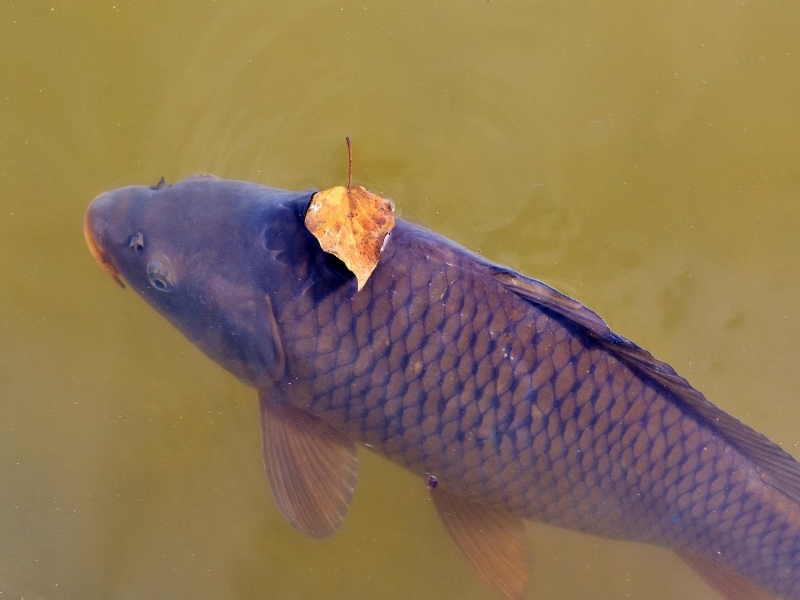
20. Common Carp
The Common Carp, sometimes referred to as the European Carp, is a freshwater fish that inhabits vast rivers and lakes throughout Asia and Europe.
Cyprinus Carpio is the common carp’s scientific name. This type of fish may be found in a reservoir in the Flaming Gorge, Lake Mohave, the Aral Sea, and other locations. It falls within the family Cyprinus. This fish weighs between 2 and 14 kilos in total. These are raised in lakes with fresh water.
They may lay up to 300,000 eggs in a single spawn, making them a very invasive species that, if not controlled, might devastate a new environment. Without any problems, they can live up to 47 years.

21. Northern Pike
Fish belonging to the genus Esox include the northern pike, which is a carnivorous fish. They are found in fresh and brackish environments in the Northern Hemisphere and get rather big. The largest Pike ever reported weighed 25 kg in 1986, and the typical length is between 40 and 55 cm.
They have white and yellow coloration on their bellies and are olive green in color. They have a few bright and black patches on their flank and on their fins. They can have red fins on occasion, and because to a mutation in pike, they can also have silver fins with silvery blue dots.
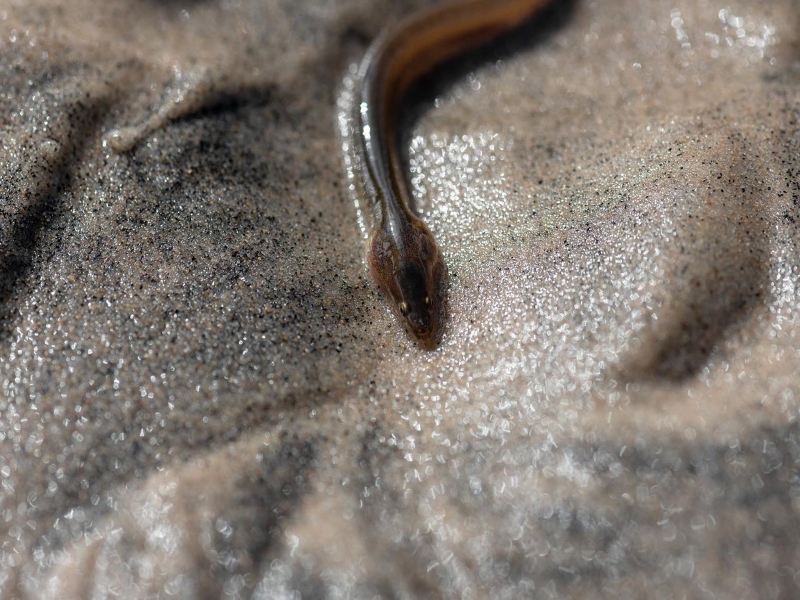
22. European Eel
The European Eel is a catadromous fish, it resembles a snake. They may grow to a length of 1.5 m and have a lifespan of up to 80 years in captivity, however one has been known to survive for 155 years.
Due to a 90% decline in population in just the previous 40 years, it is considered severely endangered. This is a result of dams, natural fluctuations in the flow of the water, parasites, overfishing, and other factors.





